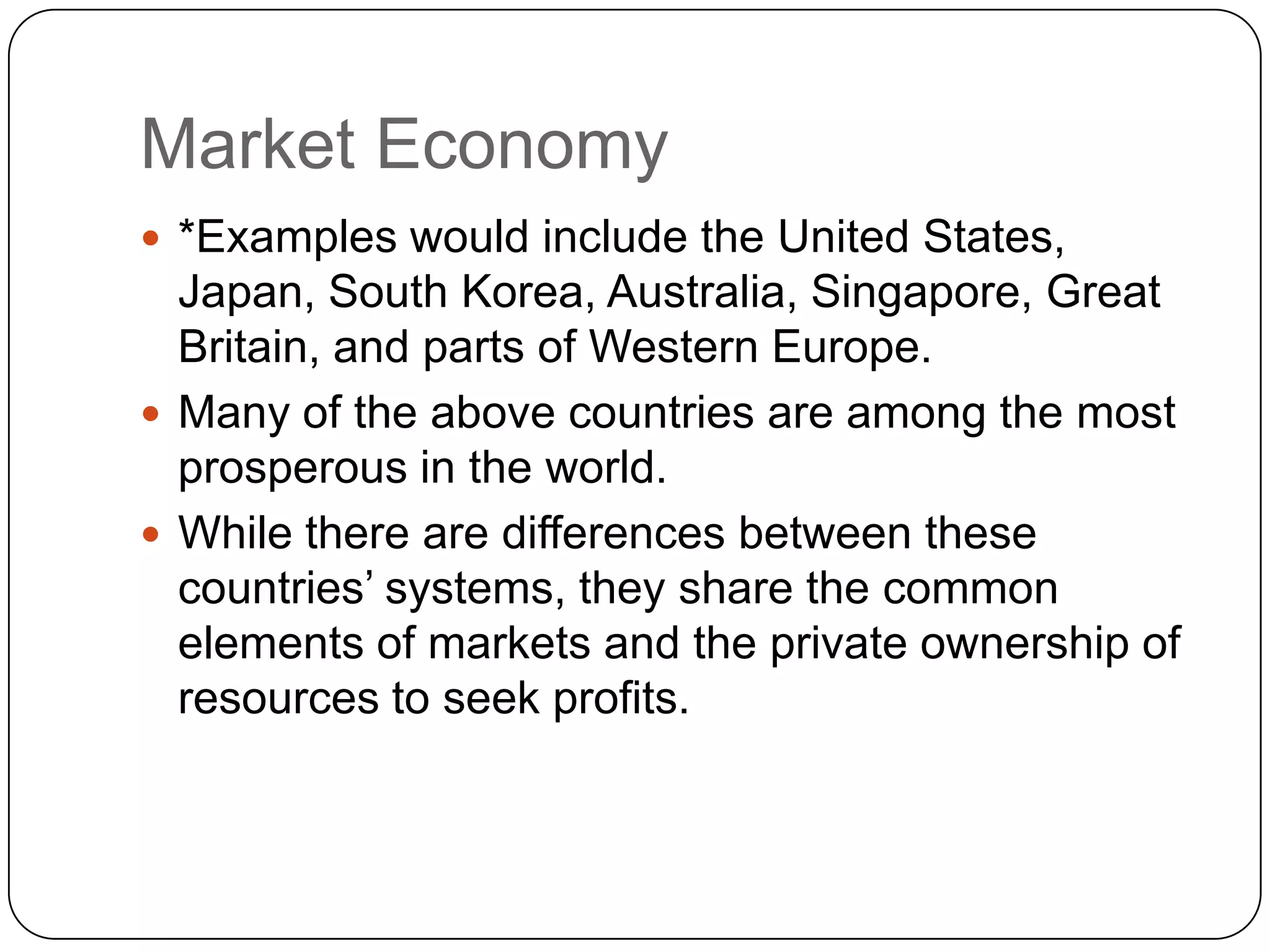The document summarizes key aspects of different economic systems and goals. It discusses three main types of economic systems - traditional economies, command economies, and market economies - providing examples of each. It then outlines seven major economic goals shared by most Americans: economic freedom, economic efficiency, economic equity, economic security, full employment, price stability, and economic growth. The document analyzes each of these goals in one to two paragraphs.






























